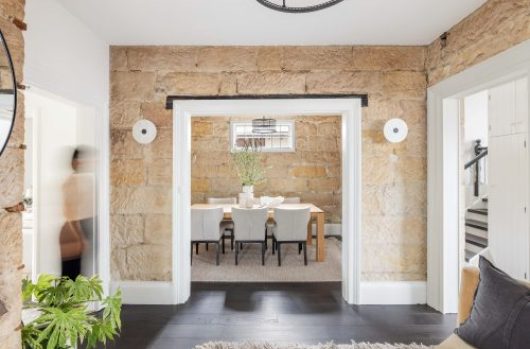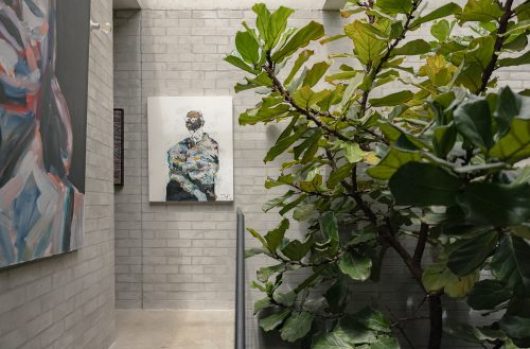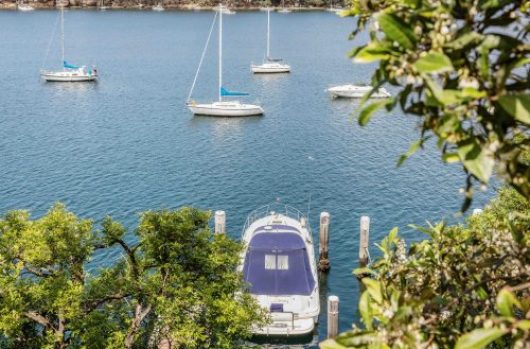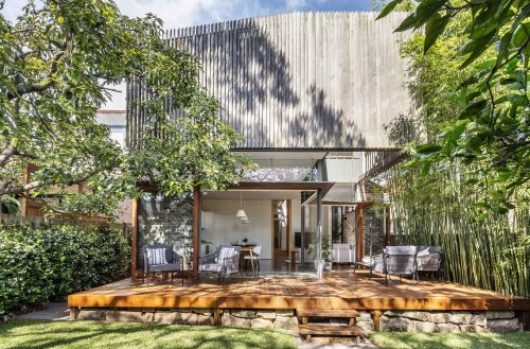The Smart Guide to inner-city living
Architect William Smart lives above his 40-person Smart Design Studio on a leafy street in Surry Hills. Trained in London under the great Late Modernist, Norman Foster, William returned to Sydney and established his SDS in 1997. Specialising in a sensual, nuanced form of Modernism, he’s renowned for his 360° overview of every project he undertakes, from grand master planning right down to the fall of window drapes. William’s the Renaissance man responsible for many of the landmark buildings that are contributing to the revival of the inner-city suburb of Chippendale.
“When we bought our place in 2003, it had been a boarding house and was in derelict condition. But we could see the potential, it had good bones and the orientation was perfect. The neighbourhood was much scruffier then, but the streets are so leafy, and I had always wanted to live and work in the same space, so it was perfect. The basement holds archives and storage, the first two floor the studio and the top floor is the residence. I designed the building very much as a whole, the idea being that we hacked into an original structure, creating new life beyond the façade.”
“On the top floor, our residence is contained in a glass louvred box, it’s clean, classic, modernist. There’s a lot of articulated glass that allows for light and ventilation control, and a central pod that contains the services and provides privacy. Only the south-facing wall is solid. If we ever outgrow the space, either in terms of the studio or the residence, I’d do it all again, only bigger. The only change I would make would be to provide a separate entrance: in the current configuration, we access our home through a shared entrance to the studio sometimes that’s just a bit too cosy.”
“The neighbourhood underwent major infrastructural change with the creation of the Eastern Distributor. All of a sudden, Bourke Street was transformed from a 70km/h oneway out of the city to a leafy local two way street. Then the bike lanes went in, and it developed a real low-fi neighbourhood feel. Then, as the demographic changed, so did the services on offer. The people that began to move in wanted bakeries, and cafés and good butchers – and all those things began to appear and thus make people want to live here. Yet it remains a broad demographic, very mixed, there’s social housing and old people, students, young families, gay couples and singles… it’s a real mix, and that’s what gives the area its charm and diversity.”
“As well as the separated entrance, we’d love more wall space to hang art. For a time, while we were refreshing the apartment we stayed over on the North Shore in a place that had tons of wall space and I kind of fell in love with the idea. But it’s pretty much one or the other –great glass walls for light and air flow, or closed solid walls for art. Unfortunately, the only way to have both is to have a much, much larger space – and that would be extremely difficult to justify in an inner city precinct.”
“We love our place so much that quite often we just hunker down for the weekend, rarely going out. But when we do, I tend to go to really simple neighbourhood cafés and restaurants, places that don’t necessarily have the most fabulous fitout nor even the most brilliant food – just constant, reliable, no fuss places where they remember your name and know what you like to eat and drink. Places like Café Zoë, on the Redfern side of Bourke Street. Or Suishi Uo with its terrific sashimi. We also love Bar. I usually sit at the same table and three times out of four order the same thing (on the fourth occasion I order differently, to prove I’m not turning into my dad. Yet.) I like shopping at Maloneys Grocer on Crown Street because it’s open to the street, has great produce and is personable.”
“In terms of the jobs I take on, I’m attracted to opportunities to be creative, to put my talents to the test. I like urbanness, the city and its problems. No wonder then, I suppose, that I’ve recently been so involved in construction in the Chippendale area, that slice of urban life between Broadway and Cleveland Street, bordered by O’Connor and Abercrombie streets. To my mind, it’s one of the most exciting inner-city precincts at the moment.”
The William Smart Guide to landmark Chippendale buildings.
Central Park, West Tower – We did the interiors of the massive Jean Novel building on Broadway with its helipad like terrace. Our concept was ‘High Speed Luxury’, the kind of perfectly finished, super efficient interiors that a new breed of inner urban dwellers would really appreciate. They were snapped up quickly and have already hit the secondary market at significantly accrued value.
White Rabbit Gallery – To house one of the world’s most extensive and impressive collections of contemporary Chinese art, we converted a freestanding brick warehouse, creating a cantilevered roof space and a three-story atrium that both aerates and provides a place for oversized works in the constantly evolving roster of exhibitions.
Indigo Slam – For the private residence of White Rabbit Gallery owner, Judith Nielson, the brief was quite simply: “to create best house in the world”! A dream brief, if ever there was one. We devised the building not only as a sumptuous private residence but as a public sculpture, a gift to Chippendale and the city.
Connor – This 13-storey apartment complex is rising out of the ground opposite Indigo Slam as we speak. With only 178 apartments, this is one of the most intimate developments on the old Carlton United Brewery site. We’ve conceived it as a series of brushed copper boxes that float above the ground, lenticular louvers rotating to follow and reflect the sun.





